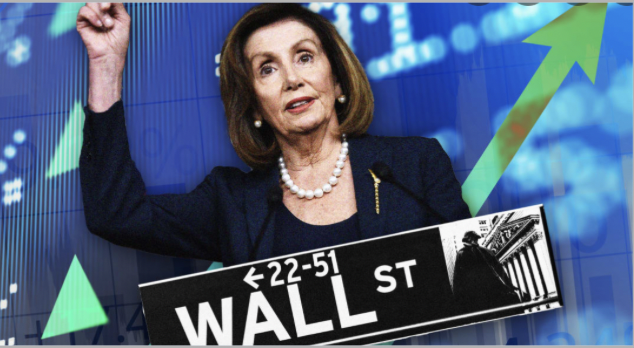The major indices inched higher for the holiday-shortened week as FOMC meeting minutes fueled optimism that the Fed may soon begin to ramp down from the historically significant 0.75% rate hikes it has implemented in the past four consecutive meetings. A “substantial majority of participants” thought that a slowdown “would likely soon be appropriate,” according to the minutes from the Fed’s mid-November meeting, released Wednesday. The Dow gained 1.7%, the Nasdaq rose 0.7%, and the S&P 500 climbed 1.5% for the week, finishing above the 4,000 level for the first time in two months. As of Friday’s close, the S&P 500 has risen 12% from its recent mid-October low.
This week, the labor market will be in the spotlight with October’s Job Openings and Labor Turnover Survey (JOLTS) and ADP’s National Employment Report for November due for Release on Wednesday. Then on Friday, the Bureau of Labor Statistics will release its nonfarm payrolls report for November. Market watchers will get clarity on how inflation is affecting U.S. consumer spending with PCE data due out on Thursday. We’ll also find out if the U.S. housing market continued to cool in September with the release of S&P Global’s Case-Shiller National Home Price Index, slated for Tuesday.
Our team has three stock recommendations for the week ahead, the first of which may not come as a surprise, considering its strong performance this year. What is surprising is that this historically recession-resistant ticker is still so cheap.
It should be no surprise that the defense giant Lockheed Martin (LMT) has outperformed the market this year. There are obvious geopolitical implications with the war in Ukraine. When Russia decided to invade its neighbor, both U.S. and European forces rushed in to help Ukraine. It may be some time before LMT stock pops again, as it did at the onset of Russia’s invasion of Ukraine. However, its order books are likely to improve due to rising defense budgets in the U.S. and abroad. Along with Lockheed providing support to Ukrainian resistance fighters, the looming uncertainties in Russia could lead to massive economic problems and gaps in power in the former Soviet Union-controlled areas.
Given the recession-proof nature of defense contracting, Lockheed Martin should continue reporting positive results and rewarding shareholders through its quarterly 2.7% forward yield. In other words, LMT will likely stand firm even if the market dives again. The company runs a P/E ratio of 24 times, below the sector median of 28.3 times. As well, LMT features excellent longer-term growth and profitability metrics.
Global healthcare leader Eli Lilly And Company (LLY) has been creating high-quality medicines for over a century. The drug firm focuses on endocrinology, oncology, neuroscience, and immunology. Key products include Trulicity, Jardiance, Humalog, and Humulin for diabetes; Taltz and Olumiant for immunology; and Verzenio and Alimta for cancer.
In September, Lilly’s immunology drug Olumiant received emergency use authorization from the FDA to treat hospitalized COVID-19 patients. Moreover, the drug has produced impressive results from phase 3 trials examining Olumiant’s efficacy as a hair loss treatment.
The mega-cap pharmaceutical giant’s pipeline is locked and loaded with promising advancements, which means plenty of potential upcoming opportunities for investors to benefit from. In the first half of 2021, Lilly increased research and development spending for its up-and-coming treatment for diabetes Tirzepatide by 21% to $3.36 billion. The drug is currently in phase three trials and has already proven to be more effective than competitors.
Berenberg Analyst Herry Holford recently upgraded Eli Lilly to Buy from Hold and raised the price target from $240 to $270. “Pipeline progress has effectively locked in Eli Lilly’s long-term sales growth, which now stands at 10% annually through 2030 versus a peer average of 4%,” Holford tells investors in a research note. The analyst says a “confluence of catalysts, superior growth, and superior returns” on Research and development, compounded by the recent pullback in the stock, prompts a revisit to the investment thesis.
The board of directors at Eli Lilly declared a fourth-quarter dividend of $0.85. LLY’s dividend payout for the year is set for the low 40% range, which should allow for robust future dividend growth.
A strong pipeline and a stable dividend make Eli Lilly an attractive consideration. The pros on Wall Street also think so. Among 17 polled analysts, 12 say to Buy LLY, 4 call it a Hold, and only 1 rates the stock a Sell. A median 12-month price target of $279 represents a 12.6% increase from its current price.
Pioneer Natural Resources Company (PXD) has long viewed sustainability as a balance of economic growth, environmental stewardship, and social responsibility. Its emphasis is on developing natural resources in a manner that protects surrounding communities and preserves the environment.
In the wake of the pandemic, when energy prices were low, PXD struck an almost perfectly timed agreement to buy fellow Permian Basin producer Parsley Energy for $4.5 billion. If you’re wondering how PXD managed to finance that transaction, the answer lies in the fact that it was an all-stock deal that ensured Pioneer didn’t have a new giant debt load hanging over its head. The fact that Parsley operated primarily in the same region of West Texas, where Pioneer had both expertise and existing staff, has paid off over time.
That deal was a coup for Pioneer shareholders, built on the fact it was large and well-capitalized at a time when stressed and debt-reliant shale plays were looking for a white knight. On top of that acquisition, PXD also boosted its dividend by 25% at the start of the year as further evidence of its strong balance sheet.
Investors can look forward to upcoming tailwinds, including Pioneer’s recently announced partnership with the world’s largest renewable energy producer, NextEraEnergy (NEE), to develop a 140-megawatt wind generation facility on Pioneer-owned land. The project will supply the company’s Permian Basin operations with low-cost, renewable power and is expected to be operational next year.
In the third quarter, revenue was up 22% YOY to $6.09 billion, smashing the consensus estimate of 4.57 billion. The company reported earnings of $7.48 per share, beating consensus expectations of $7.27 per share. So far, in 2022, the company has rewarded its investors handsomely with $20.73 per share through its generous 10.78% cash dividend. Even after gaining 30% this year, Pioneer shares likely still have valuation upside in addition to their tremendous dividend income potential.
You might also like:
- Bank bailout a cover-up for a far worse plot?
- Surprising twist gives Biden landslide election win?
- The Two Men Destroying America
- “Future Fuel” will unleash $11 trillion wave of wealth
- This “peeing car” is at the center of an $11.7 trillion energy revolution
- The End Of The US Dollar
- Get Your Money Out of U.S. Banks Immediatley




















 and then
and then